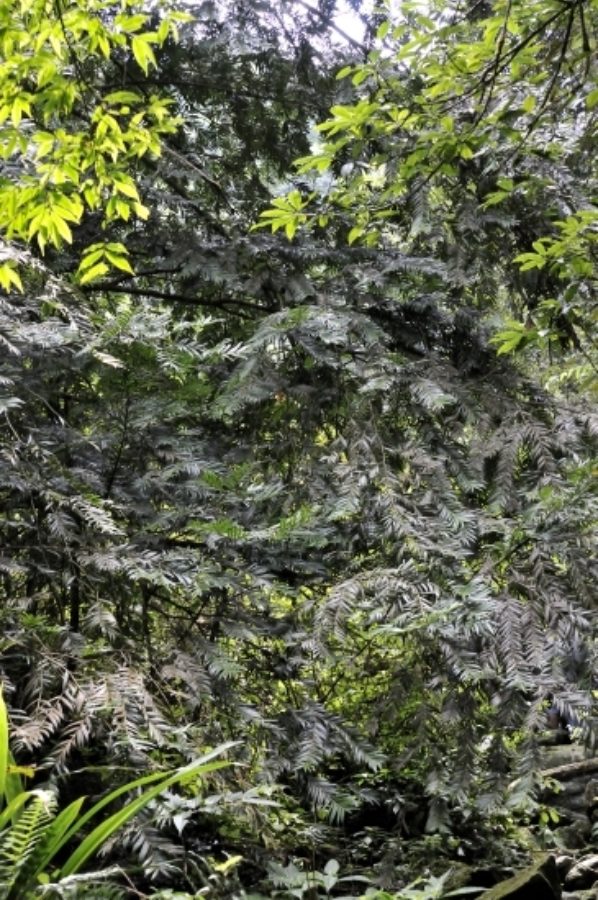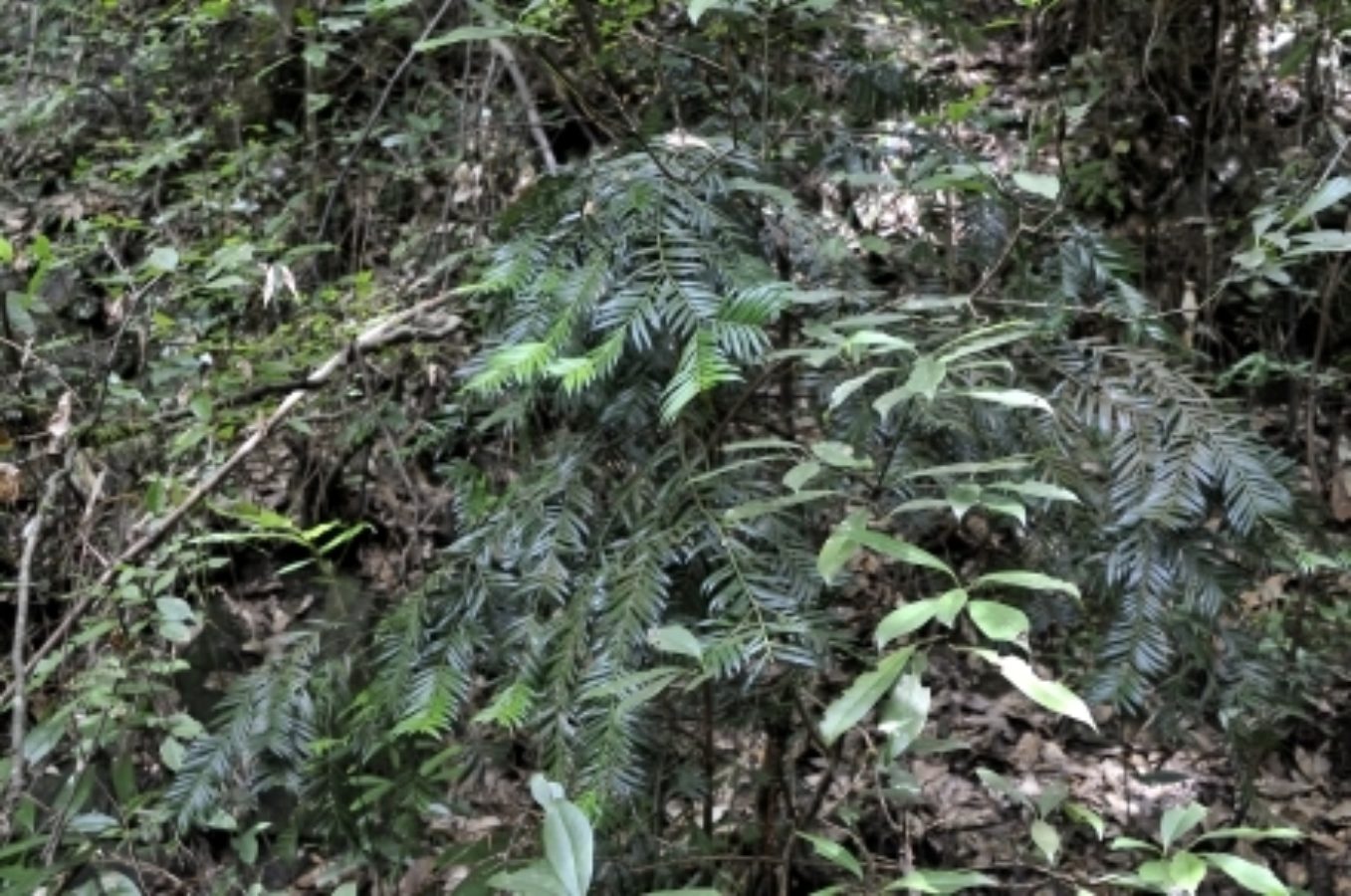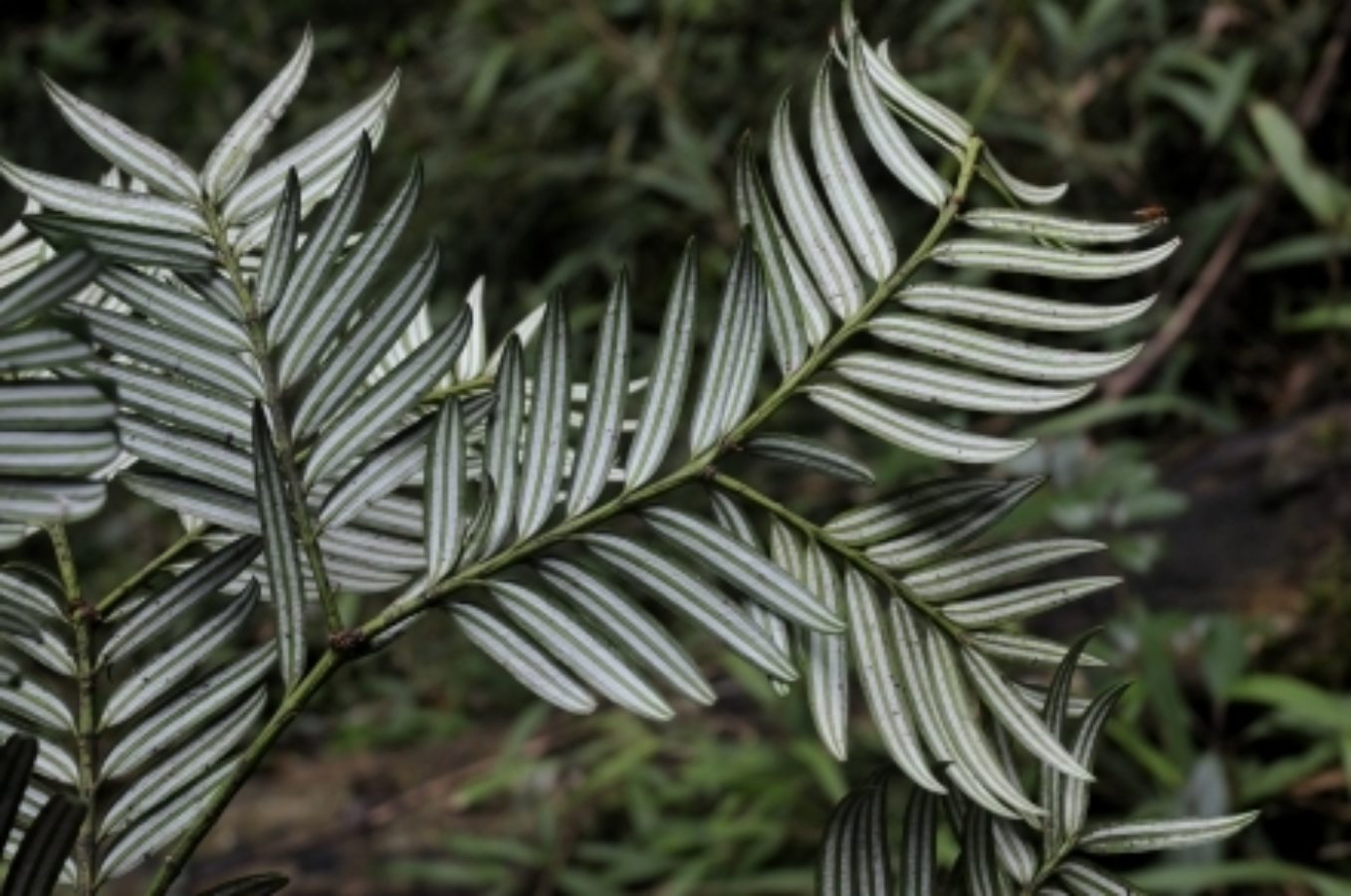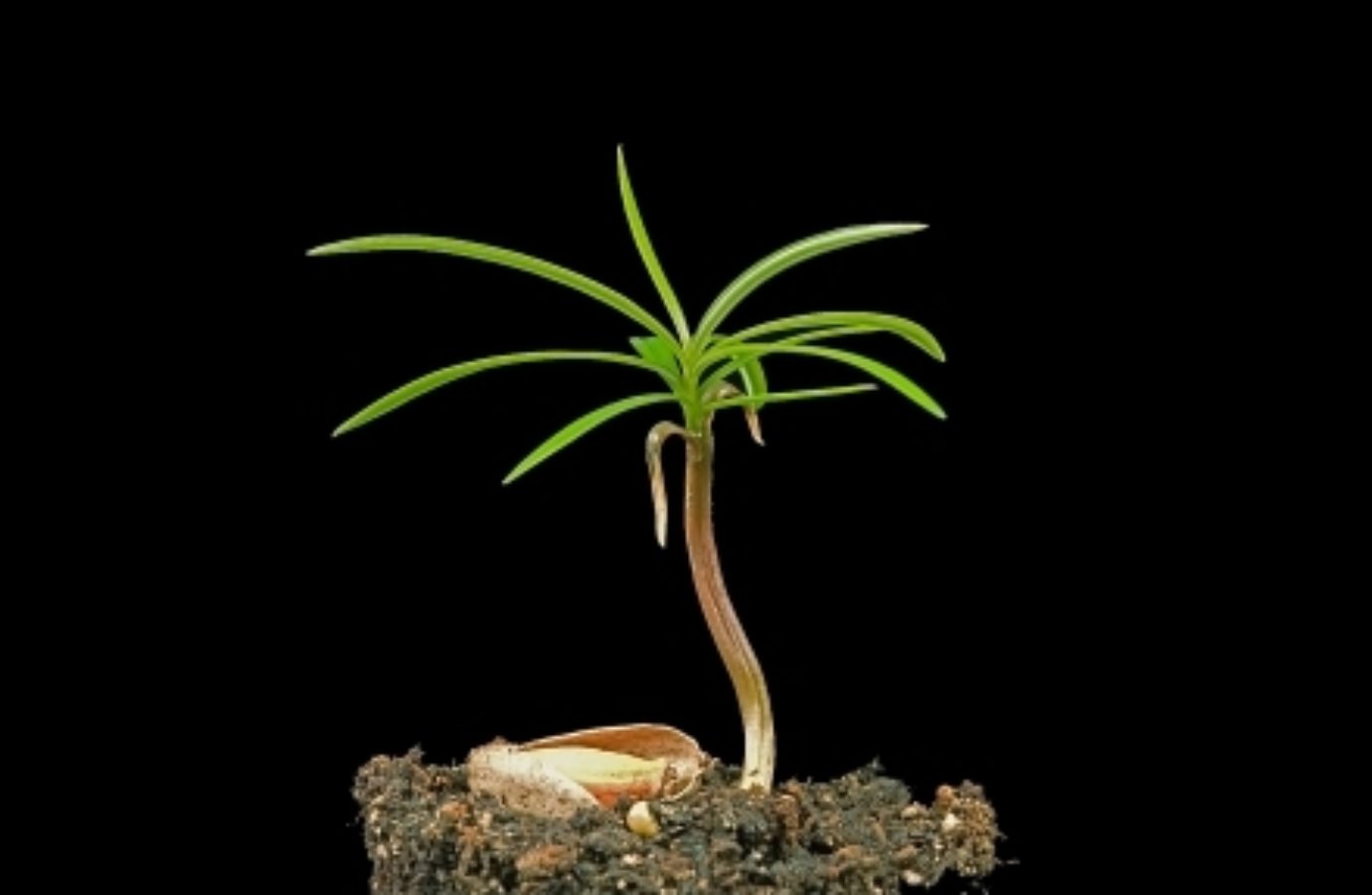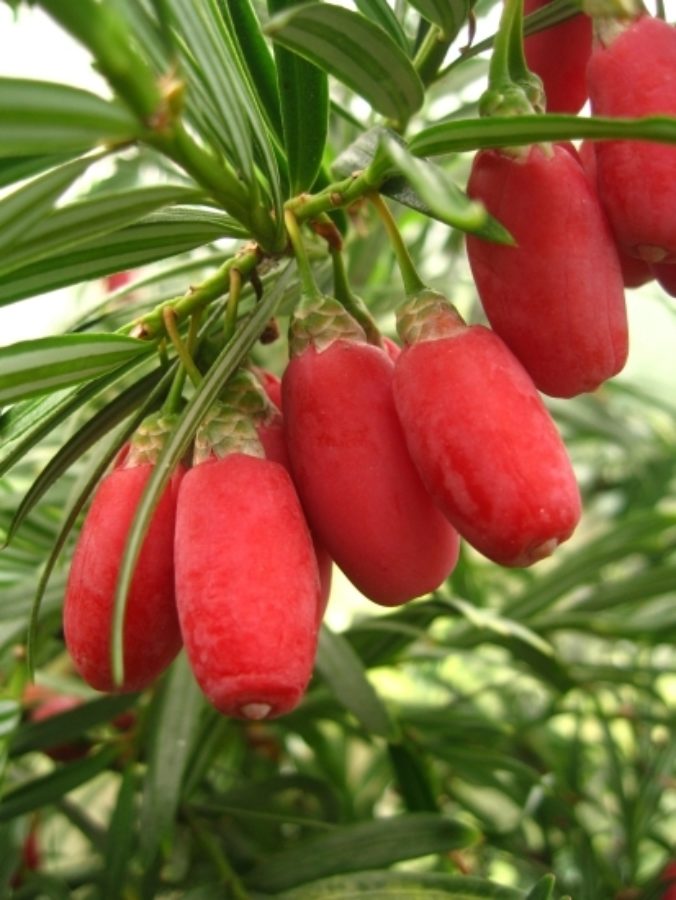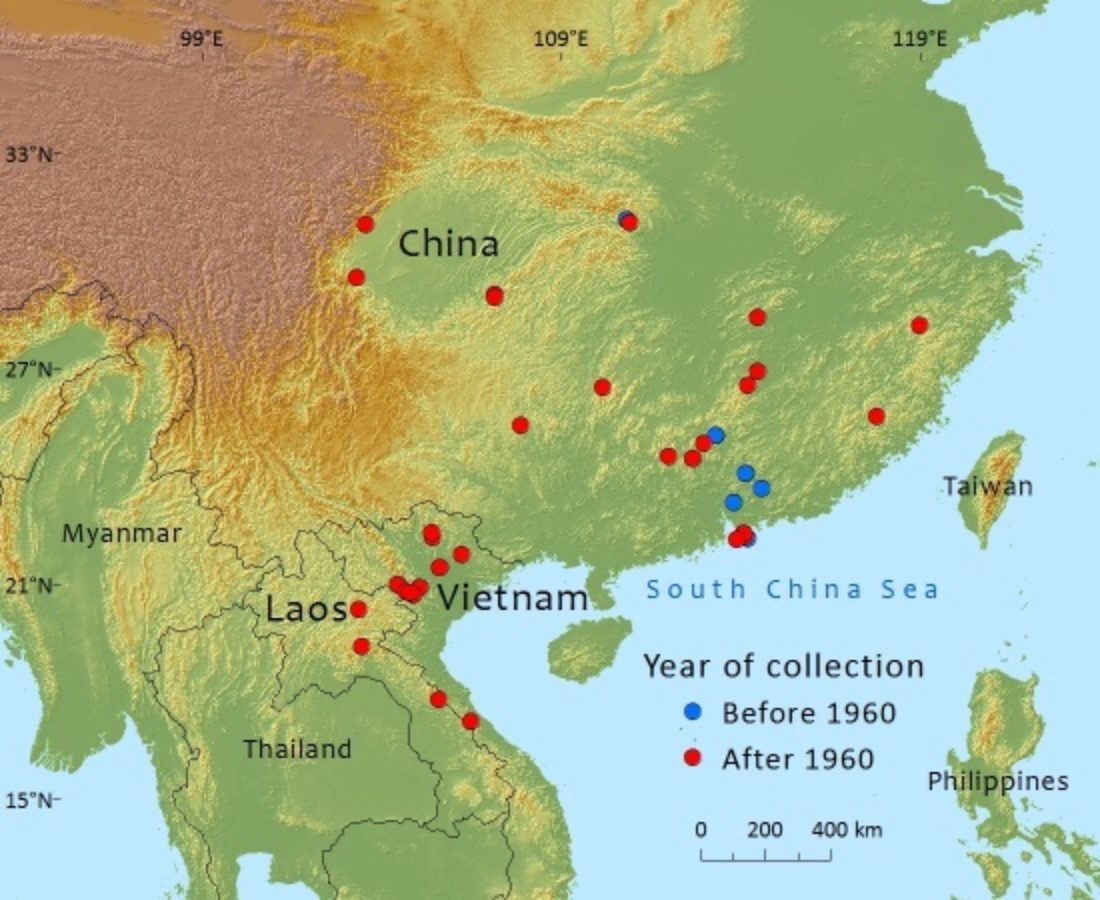Taxaceae
Amentotaxus argotaenia
A widespread species that only ever occurs in small isolated populations. It is currently assessed as Near Threatened due to range wide deforestation.
Human Uses
The wood is used for tool making, furniture and wood turning (handicrafts). This species is in cultivation in China and was introduced to Europe from Hong Kong; it makes an attractive foliage shrub but only grows outside in warmer regions. This (and other) species is rare in gardens due to poor availability in the horticultural trade. In China it is used as a bonzai plant. The seeds have high oil content and are surrounded by a very striking red aril. Recent investigations have been undertaken to analyse its potential for anti-cancer drugs similar to those found in Taxus
References and further reading
- Averyanov, L.V., T.H. Nguyen, K.S. Nguyen, T.V. Pham, V. Lamxay, S. Bounphanmay, S. Lorphengsy, K.P. Loc, S. Lanorsavanh & K. Chantthavongsa 2014. Gymnosperms of Laos. Nordic Journal of Botany 32(6):765-805.
- Farjon, A. 2010. A Handbook of the World's Conifers. Koninklijke Brill, Leiden
- Gao, L.M., L. Yan, L.K. Phan, L.J. Yan, P. Thomas, L. Phan, M. Moeller, D.Z. Li 2016. DNA barcoding of East Asian Amentotaxus (Taxaceae): potential new species and implications for conservation. Journal of Systematics and Evolution:doi: 10.1111/jse.12207, (online early).
- Ge, X., X. Zhou, Z. Li, T. Hsu, B.A. Schaal & T. Chiang 2005. Low genetic diversity and significant population structuring in the relict Amentotaxus argotaenia complex (Taxaceae) based on ISSR fingerprinting. Journal of Plant Research 118:415-422.
- Hilton-Taylor, C., Yang, Y., Rushforth, K. & Liao, W. 2013. Amentotaxus argotaenia. The IUCN Red List of Threatened Species 2013: e.T42545A2986540. http://dx.doi.org/10.2305/IUCN.UK.2013-1.RLTS.T42545A2986540.en. Downloaded on 07 December 2016.
- Miao, S., H. Wang, J. Huang, P. Guo 2008. Population characteristics of some wild rare and endangered plants in north and northeast Guangdong Province, China. Journal of Tropical and Subtropical Botany 16(5):397-406.
- Pang, K.S., Yip, J.K.L. and Lai, C.C. 2011. A review of the status of the IUCN Red List of Threatened Plants in Hong Kong. Hong Kong Biodiversity (Agriculture, Fisheries and Conservation Department Newsletter) 20: 1-8
- Nguyen, T.H., K.L. Phan, D.T.L. Nguyen, P. Thomas, A. Farjon, L. Averyanov, J. Regalado Jr 2004. Vietnam Conifers: Conservation Review 2004. Hanoi: Flora and Fauna International, Vietnam Programme. 129 pp.
- Thomas, P., Sengdala, K., Lamxay, V. and Khou, E. 2007. New records of Conifers in Cambodia and Laos. Edinburgh Journal of Botany 64(1): 37-44
